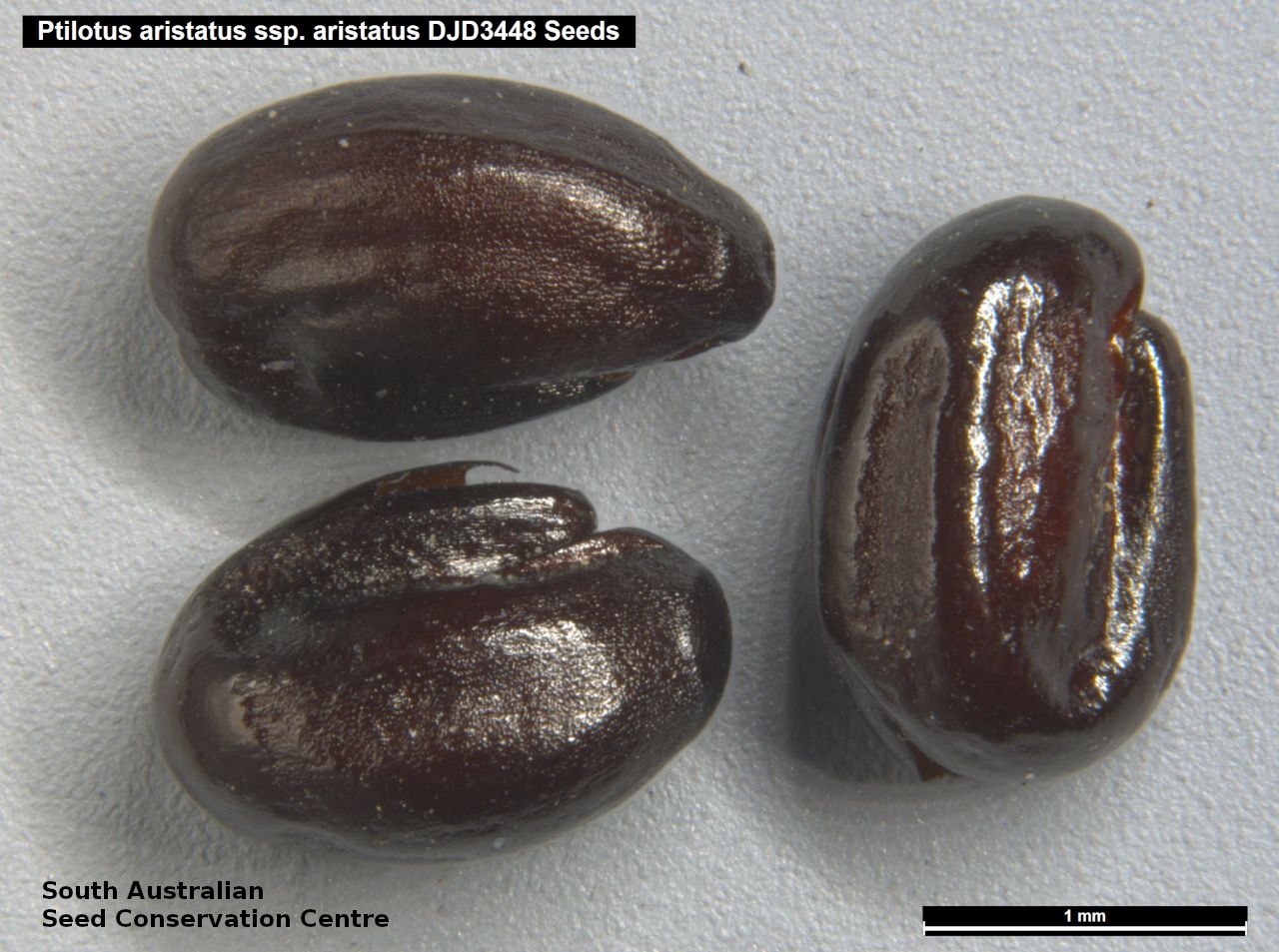









Botanical art
Prior names
Ptilotus blackii, partly
Ptilotus aristatus var. eichlerianus
Ptilotus aristatus var. aristatus
Ptilotus eichlerianus
Etymology
Ptilotus from the Greek 'ptilotos' meaning feathered or winged; referring to the hairy flowers. Aristatus from the Greek 'arista' meaning awned.
Distribution and status
Found in the far north central part of South Australia, growing in open vegetation on gibber plains or slopes with loam or clay textured soils. Also found in the Northern Territory. Native. Rare in South Australia. Rare in the Northern Territory.
Herbarium region: Lake Eyre
NRM region: South Australian Arid Lands
AVH map: SA distribution map (external link)
Plant description
Perennial or sometime annual herb to 40 cm high with stout taproot, stems striate, with sparse to dense hairs, often hairless. Leaves sessile, with sparse hairs, hairs denser on new growth and in leaf axils but often hairless, green, drying pale green or yellowish-green. Basal leaves spathulate, obovate or rarely narrowly obovate, to 110 mm long including the long base which is usually equal to or longer than upper wider portion and 25 mm wide. Stem leaves ovate, narrowly ovate, elliptic, obovate or narrowly obovate, to 52 mm long and 14 mm wide. Flower-spikes ovoid or subcylindrical to 60 mm long and 35 mm wide, with pink to pinkish-purple flowers covered in dense hairs. Flowering between April and November. Fruits are ovoid head containing numerous long papery and hairy fruits, each containing one seed. Seeds are reddish-brown, reniform to 2 mm long and 1.3 mm wide. Seed embryo type is peripheral.
Seed collection and propagation
Collect seeds between October and November. Be very careful when collecting this species as the fruits contain fine hairs that may cause an allergic reaction for some people. Collect the fruit heads when dried to a pale straw colour. Each fruit should come off the head easily when fingers are rubbed up the stem. Collect more fruits than required as not all fruits will have a viable seed. Be very careful when cleaning this species as the fruits contain fine hairs that may cause an allergic reaction for some people. To clean, rub the fruit heads gently to dislodge the seed at the base of each fruit. Use a sieve to separate the unwanted material. Store the seeds with a desiccant such as dried silica beads or dry rice, in an air tight container in a cool and dry place. Seed viability is usually high but seed availability tend to be low. Seeds are non-dormant, viable seed should germinate readily.
| Location | No. of seeds (weight grams) | Number of plants | Date collected | Collection number Collection location | Date stored | % Viability | Storage temperature |
|---|---|---|---|---|---|---|---|
| BGA MSB | 1,100 (1.16 g) 1,000 (1 g) | 100+ | 21-Sep-2016 | DJD3448 Lake Eyre | 1-Nov-2017 | 100% | -18°C |
Number of plants: This is the number of plants from which the seeds were collected.
Collection location: The Herbarium of South Australia's region name.
% Viability: Percentage of filled healthy seeds determined by a cut test or x-ray.